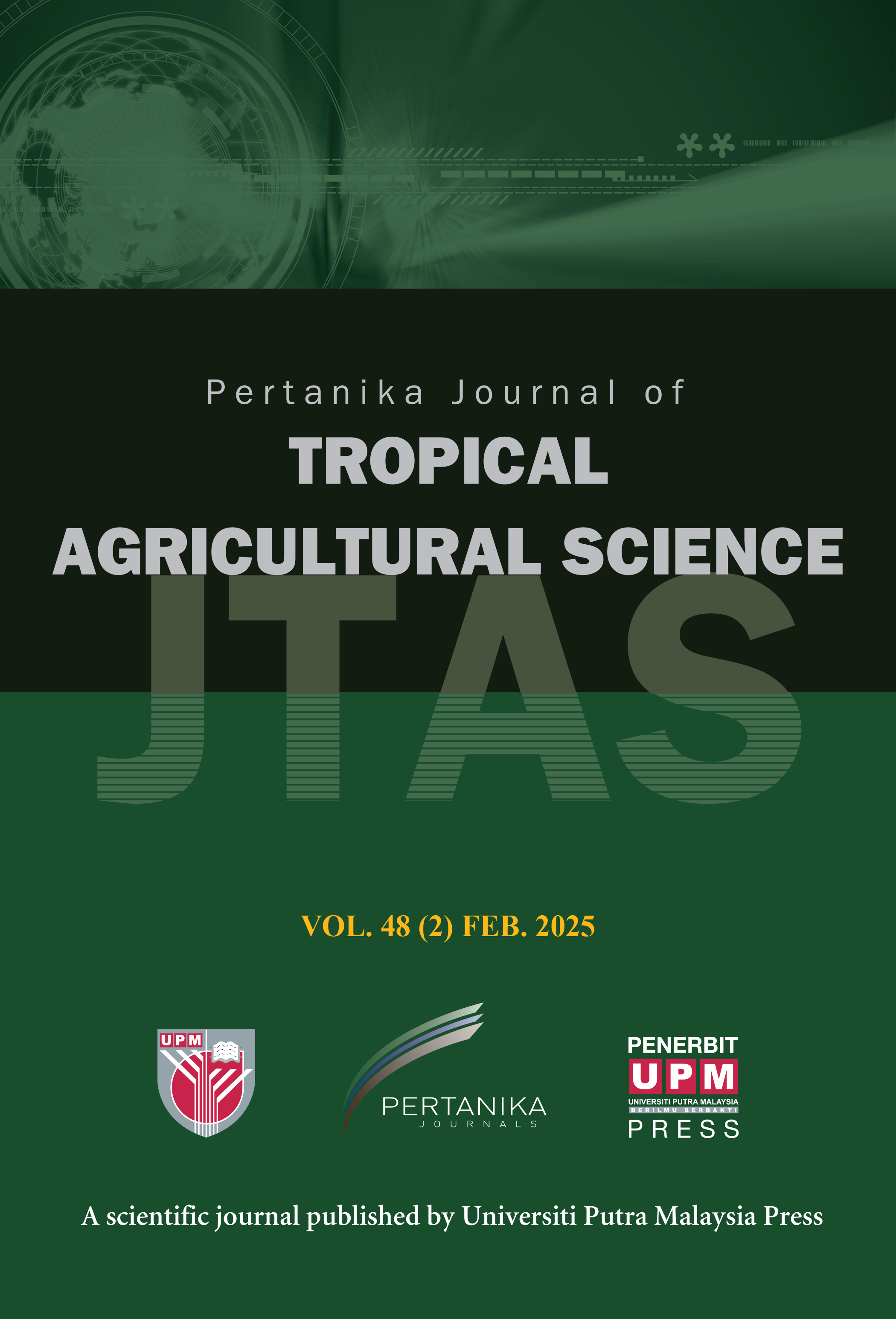PERTANIKA JOURNAL OF TROPICAL AGRICULTURAL SCIENCE
e-ISSN 2231-8542
ISSN 1511-3701
In-silico and Phylogenetic Analysis of Acetate: Succinate COA-Transferase (ASCT) from Angiostrongylus malaysiensis
Quincie Sipin1, Suey Yee Low1, Wan Nur Ismah Wan Ahmad Kamil2, Kiew-Lian Wan3, Mokrish Ajat4, Juriah Kamaludeen5,6, Sharifah Salmah Syed-Hussain7, Nur Indah Ahmad1 and Nor Azlina Abdul Aziz1*
Pertanika Journal of Tropical Agricultural Science, Volume 48, Issue 3, May 2025
DOI: https://doi.org/10.47836/pjtas.48.3.06
Keywords: Acetate: succinate CoA-transferase (ASCT), acetate production, Angiostrongylus malaysiensis
Published on: 2025-05-16
The zoonotic capability of Angiostrongylus malaysiensis was recently observed after several years of doubt. This parasite was found in a high burden of Malaysian rats, which is alarming. There is currently no effective treatment for human neuroangiostrongyliasis. Acetate: succinate CoA-transferase (ASCT) enzyme catalyses acetate production in helminth parasites. ASCT was classified into three subfamilies within the family I CoA-transferases (IA, IB, and IC). Acetate is an essential metabolic end product of many parasites, making it an attractive drug target since it is absent in mammalian hosts. The current study describes the in-silico analysis conducted for the identification and phylogenetic characterisation of A. malaysiensis ASCT and genetic variations between subfamilies of ASCT. The AmASCT was identified from the ongoing de novo transcriptome assembly and annotation of adult A. malaysiensis. The analysis of AmASCT physiochemical properties, multiple sequence alignment and phylogenetic relations with the ASCTs of other helminths are conducted using standard bioinformatic tools. Pairwise comparisons between subfamilies of ASCT have also been conducted in silico. AmASCT has the conserved regions of the family I CoA-transferases and is clustered with subfamily IB of ASCT. From the pairwise analysis, subfamilies IB and IC were most closely related between the three subfamilies. AmASCT was predicted to be overall hydrophilic and stable in a neutral to slightly alkaline environment within the parasite. The phylogenetic analysis confirmed that AmASCT belongs to subfamily IB of ASCTs. Further study on the biochemical activity of ASCT in A. malaysiensis is required to determine its enzymatic function.
ISSN 1511-3701
e-ISSN 2231-8542




